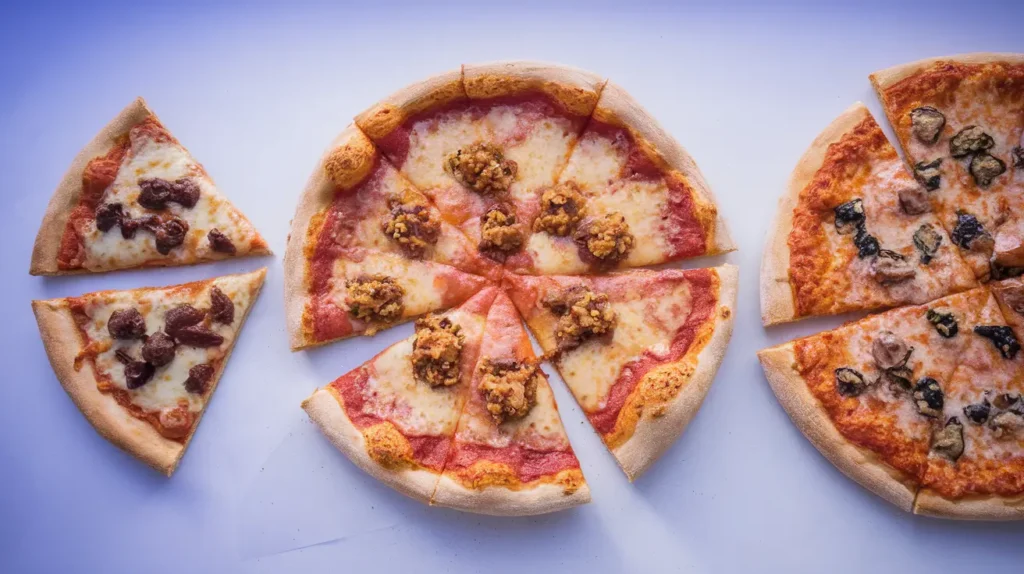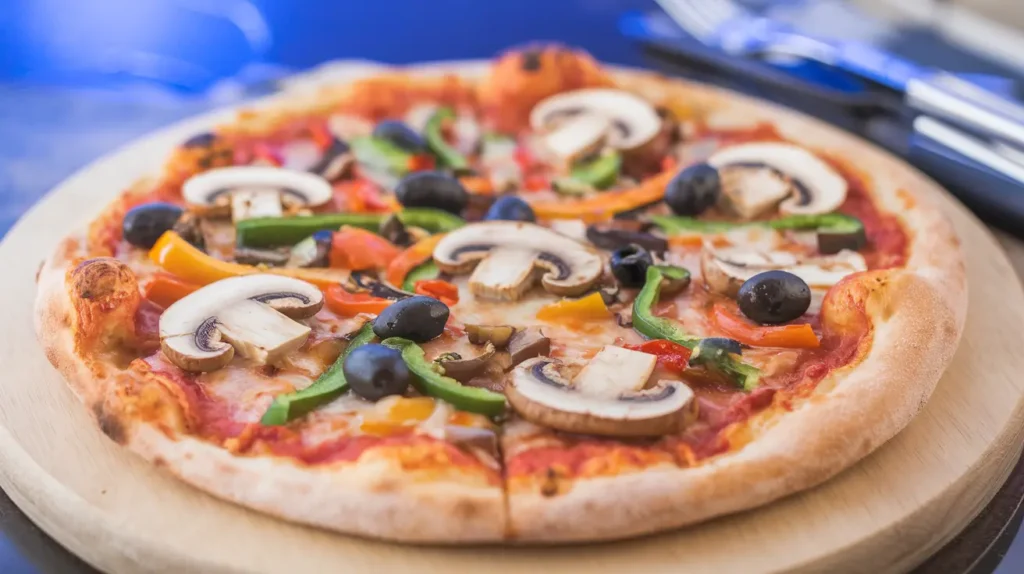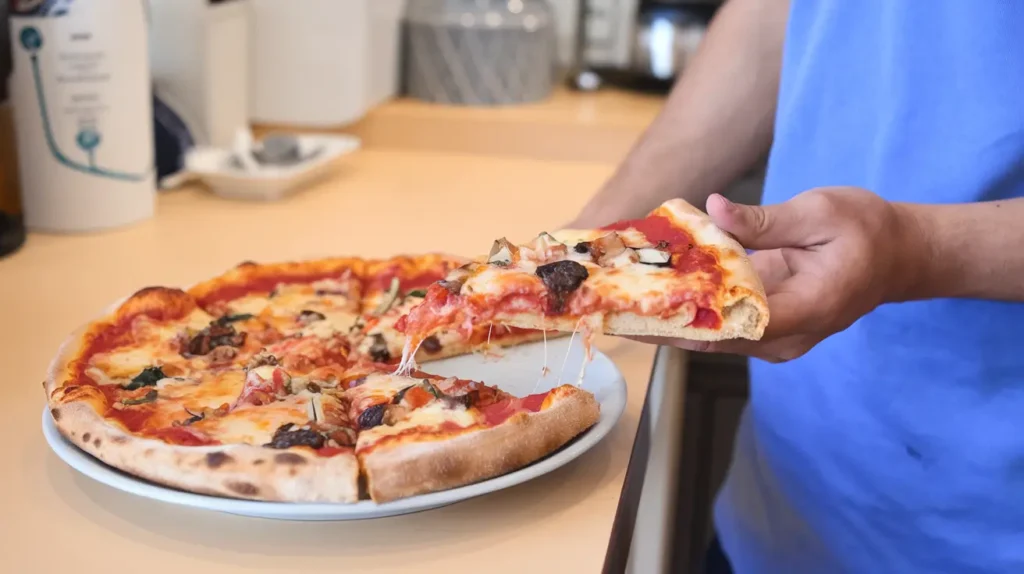Gluten-Free 10-Inch Pizza: A Delicious and Healthy Alternative
If you’re looking for a delicious gluten-free alternative to traditional pizza, this 10-inch gluten-free pizza recipe is exactly what you need! Inspired by a simple and easy-to-make naan bread recipe, this crust is soft, slightly crispy, and perfect for creating your favorite pizza toppings. Whether you follow a gluten-free diet or just want a lighter, healthier option, this pizza will not disappoint.
Looking for more pizza variations? Check out the Ultimate Guide to a 10-Inch Pizza to learn about portion sizes, topping suggestions, and baking techniques!
Table of Contents
Why Choose Gluten-Free Pizza?
Traditional pizza crusts contain wheat flour, which has gluten—a protein that can cause digestive issues for some people. By using gluten-free flours like tapioca, coconut, and arrowroot flour, you get a pizza crust that’s just as satisfying but easier to digest. Plus, this recipe is paleo-friendly and dairy-free!
Ingredients for the Gluten-Free 10-Inch Pizza Crust
To make this easy and delicious gluten-free pizza, you’ll need:
- ¼ cup full-fat canned coconut milk
- ¼ cup water
- ¼ cup dairy-free plain yogurt (such as Forager or Culina)
- 1 tablespoon olive oil
- 1 large garlic clove, minced
- 2 teaspoons baking powder
- ½ teaspoon sea salt
- ½ cup tapioca flour
- ½ cup coconut flour
- ½ cup arrowroot flour
For Topping:
- Tomato sauce or pesto
- Your favorite cheese or dairy-free alternative
- Toppings of choice (pepperoni, mushrooms, bell peppers, onions, basil, etc.)
- A drizzle of olive oil for extra crispiness
Looking for the perfect sauce to go with your pizza? Check out this Ultimate Guide to Pita Pockets, where you’ll find flavorful spreads that can double as pizza sauce!
How to Make the Gluten-Free Pizza Crust

- Mix the Dough: In a mixing bowl, whisk together coconut milk, water, yogurt, olive oil, garlic, baking powder, and salt. Slowly add the tapioca, coconut, and arrowroot flour, stirring until the dough comes together.
- Form the Dough: Roll the dough into a ball. If it’s too sticky, add a little extra flour; if it’s too dry, add a splash of coconut milk.
- Roll It Out: Dust a surface with tapioca flour and roll the dough into a 10-inch circle, about ¼ inch thick.
- Cook the Crust: Heat a cast-iron skillet over medium heat with a thin layer of olive oil. Cook the pizza base for 2-3 minutes on one side until golden, then flip and cook for another 1-2 minutes.
- Add Toppings: Place the crust on a baking sheet, spread your favorite sauce, sprinkle cheese, and add toppings.
- Bake & Enjoy: Preheat your oven to 425°F (220°C) and bake for 10-12 minutes until the cheese is melted and bubbly.
Pro Tips for the Best Gluten-Free Pizza
- For extra crispiness, brush the crust with olive oil before baking.
- Pre-bake the crust before adding toppings to avoid sogginess.
- Experiment with flavors! Try pesto instead of tomato sauce or use dairy-free cheese for a completely vegan option.
Frequently Asked Questions (FAQs) About 10-Inch Pizzas

1. What is the best gluten-free flour for pizza crust?
The best gluten-free flours for pizza crust include tapioca flour, coconut flour, and arrowroot flour, as they create a light and chewy texture. Some people also use almond flour or cassava flour for a more traditional feel.
2. Can I make gluten-free pizza dough ahead of time?
Yes! You can prepare the dough up to 3 days in advance and store it in an airtight container in the fridge. If you want to freeze it, wrap the dough tightly and store it for up to 3 months.
3. How do you keep gluten-free pizza crust from being too dry?
To prevent dryness, use full-fat coconut milk and dairy-free yogurt in the dough. Also, avoid overbaking, and brush the crust with olive oil or ghee before and after baking for extra moisture.
4. What temperature should I bake gluten-free pizza at?
For the best results, bake your gluten-free pizza at 425°F (220°C) for 10-12 minutes or until the cheese is melted and the edges are golden brown.
5. Can I make this pizza crust vegan?
Yes! This recipe is already dairy-free, so just ensure you use a vegan yogurt alternative and plant-based cheese for a completely vegan pizza.
- Tropical Pineapple Salsa -Fresh, Flavorful, and Easy to Make
- Homemade Salsa for Canning – Honeybunch Hunts
- Easy Homemade Salsa Verde | Complete Guide
- Black Bean Corn Salsa – Fresh and Flavorful Recipe
- Pineapple Salsa That Wows at Every Party
Gluten-Free 10-Inch Pizza
Equipment
- Mixing bowl
- Rolling Pin
- Cast Iron Skillet
- Baking Sheet
Ingredients
Pizza Dough
- 1/4 cup full-fat canned coconut milk
- 1/4 cup water
- 1/4 cup dairy-free plain yogurt (such as Forager or Culina)
- 1 tbsp olive oil
- 1 clove garlic minced
- 2 tsp baking powder
- 1/2 tsp sea salt
- 1/2 cup tapioca flour
- 1/2 cup coconut flour
- 1/2 cup arrowroot flour
Pizza Toppings
- tomato sauce or pesto
- cheese or dairy-free alternative
- toppings of choice (pepperoni, mushrooms, bell peppers, onions, basil, etc.)
- olive oil for extra crispiness
Instructions
- In a mixing bowl, whisk together coconut milk, water, yogurt, olive oil, garlic, baking powder, and salt. Slowly add the tapioca, coconut, and arrowroot flour, stirring until the dough comes together.
- Roll the dough into a ball. If it’s too sticky, add a little extra flour; if it’s too dry, add a splash of coconut milk.
- Dust a surface with tapioca flour and roll the dough into a 10-inch circle, about 1/4 inch thick.
- Heat a cast-iron skillet over medium heat with a thin layer of olive oil. Cook the pizza base for 2-3 minutes on one side until golden, then flip and cook for another 1-2 minutes.
- Place the crust on a baking sheet, spread your favorite sauce, sprinkle cheese, and add toppings.
- Preheat your oven to 425°F (220°C) and bake for 10-12 minutes until the cheese is melted and bubbly.
Notes
Final Thoughts

This gluten-free 10-inch pizza is a perfect way to enjoy your favorite flavors without compromising on texture or taste. With a soft and slightly chewy crust, this recipe is great for weeknight dinners, meal prep, or even a homemade pizza party.
Looking for more gluten-free recipes? Try this Gluten-Free Pumpkin Bread Recipe for a tasty dessert to pair with your pizza night!
Would you like more pizza-related content, or do you want additional internal linking opportunities? Let me know! 😊

